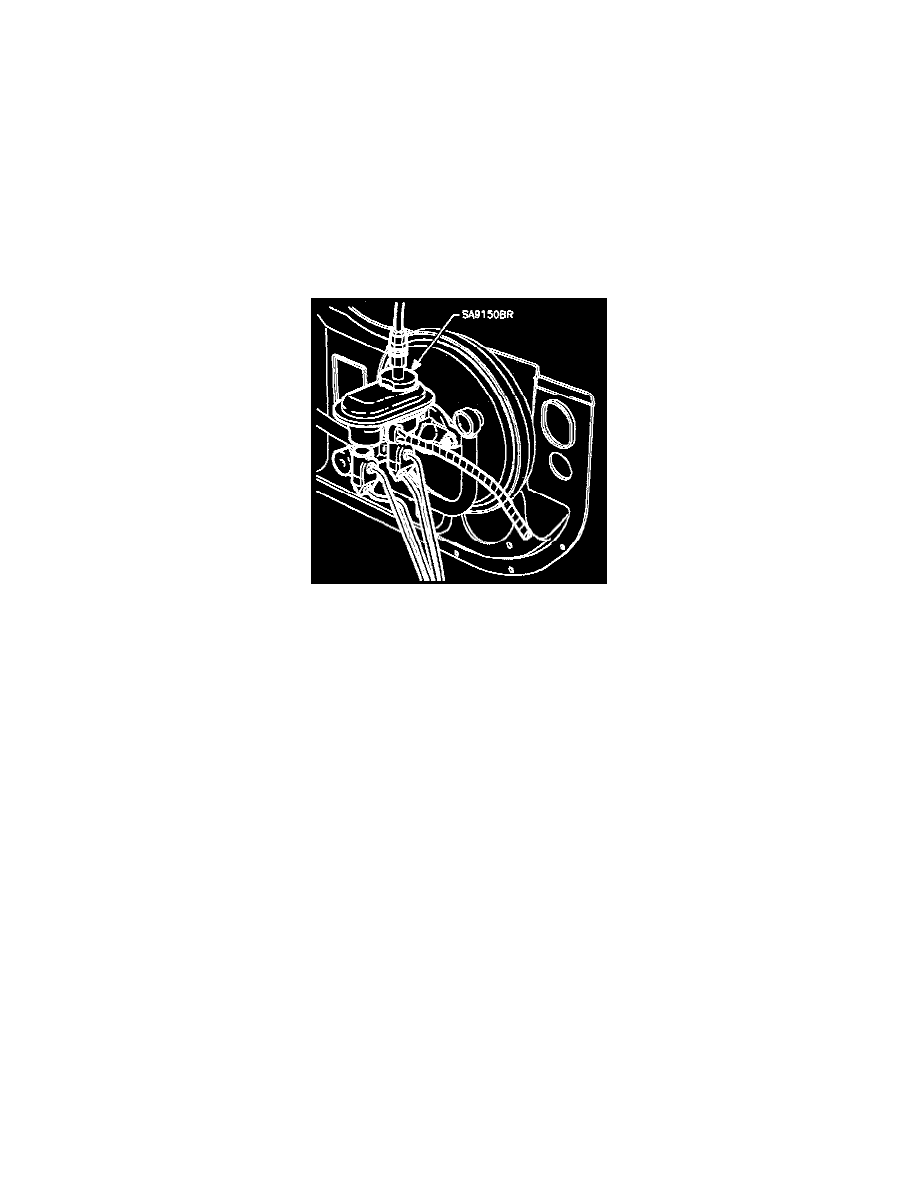SW2 L4-1.9L DOHC VIN 7 (1997)

Brake Bleeding: Service and Repair
Bleeding Non-ABS Equipped Vehicles
Pressure Bleeding (Preferred)
CAUTION: Use only DOT 3 brake fluid from a clean, sealed container. Do not use any fluid from a container which is wet with water. Do not use DOT
5 silicone fluid.
NOTE: Pressure bleeding equipment must be of the diaphragm type. It must have a rubber diaphragm between the air supply and the brake fluid to
prevent air, moisture, and other contaminants from entering the hydraulic system.
1. Clean brake fluid reservoir cap and area around cap.
2. Remove cap.
3. Fill the master cylinder reservoir with clean brake fluid.
4. Install bleeder adapter (SA915OBR or equivalent) to the brake fluid reservoir.
5. Connect pressure bleeder to adapter.
6. Charge pressure bleeder equipment to 138-172 kPa (20-25 psi).
7. If the master cylinder is suspected of having air in its bore, it must be bled before proceeding to brake line bleeding.
a. Loosen left front brake line (front upper port) at master cylinder.
b. Allow brake fluid to flow from front master cylinder port.
c. Tighten left front brake line into master cylinder.
^
Torque to 32 Nm (24 ft. lbs.)
d. Loosen left front brake line at master cylinder 1/4 turn.
e. Depress brake pedal slowly until fluid is seen coming from the fitting.
f.
Once again, tighten left front brake line into master cylinder, while pedal is being depressed and slowly release pedal.
^
Torque to 32 Nm (24 ft. lbs.)
g. Repeat sequence until all air is removed from front (secondary) master cylinder bore.
h. Loosen right front brake line (rear upper port) at master cylinder.
i.
Allow brake fluid to flow from rear master cylinder port.
j.
Tighten right front brake line into master cylinder.
^
Torque to 32 Nm (24 ft. lbs.)
k. Loosen right front brake line at master cylinder 1/4 turn.
l.
Depress brake pedal slowly until fluid is seen coming from the fitting.
m. Once again, tighten right front brake line into master cylinder while pedal is being depressed and slowly release pedal.
^
Torque to 32 Nm (24 ft. lbs.)
n. Repeat sequence until all air is removed from rear (primary) master cylinder bore.
8. Bleed individual calipers and wheel cylinders.
NOTE: To assist in freeing entrapped air, tap lightly on caliper casting with a rubber mallet.
